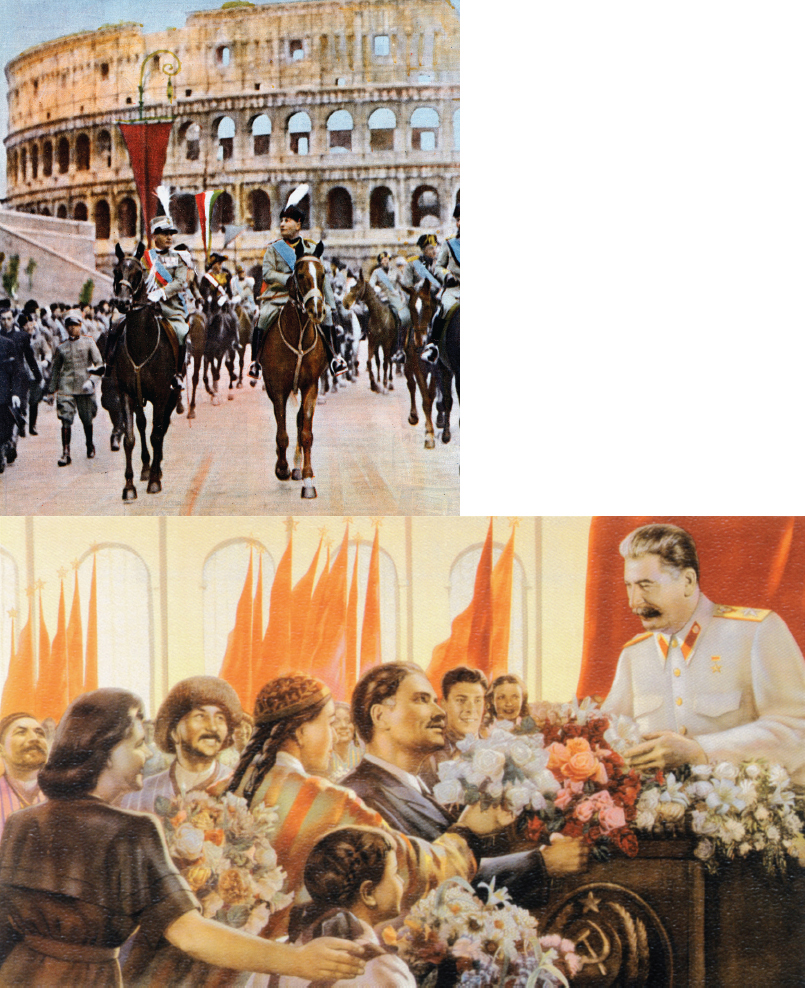Conservative Authoritarianism and Radical Totalitarian Dictatorships
The traditional form of antidemocratic government in European history was conservative authoritarianism. Like Catherine the Great in Russia and Metternich in Austria, the leaders of such governments relied on obedient bureaucracies in their efforts to control society. Though political opponents were often jailed or exiled, these older authoritarian governments were limited in both power and objectives. They had neither the ability nor the desire to control many aspects of their subjects’ lives. As long as the people did not try to change the system, they were typically allowed considerable personal independence. After the First World War, authoritarianism revived, especially in eastern Europe. What emerged, however, were new kinds of radical dictatorship that went much further than conservative authoritarianism.
Some scholars use the term totalitarianism to describe these radical dictatorships, which made unprecedented “total claims” on the beliefs and behavior of their citizens. The totalitarian model emphasizes the characteristics that Fascist and Communist dictatorships had in common. One-
Most historians agree that totalitarianism owed much to the experience of total war in 1914 to 1918 (see Chapter 25). World War I required state governments to limit individual liberties and intervene in the economy in order to achieve one supreme objective: victory. Totalitarian leaders were inspired by the example of the modern state at war and greatly expanded the power of the state in pursuit of social control.
Communist and Fascist dictatorships shared other characteristics. Both rejected parliamentary government and liberal values. Classical liberals (see "Liberalism and the Middle Class" in Chapter 21) sought to limit the power of the state and protect the rights of the individual. Totalitarians, on the other hand, believed that individualism undermined equality and unity, and rejected democracy in favor of one-
A charismatic leader typically dominated the totalitarian state — Stalin in the Soviet Union, Mussolini in Italy, Hitler in Germany. All three created political parties of a new kind, dedicated to promoting idealized visions of collective harmony. They used force and terror to intimidate and destroy political opponents and pursued policies of imperial expansion to exploit other lands. They censored the mass media and instituted propaganda campaigns to advance their goals. (See “Picturing the Past: The Appeal of Propaganda.”) Finally, and perhaps most important, totalitarian governments engaged in massive projects of state-

CONNECTIONS: How might these idealized portrayals have helped build support for their respective regimes? Was there any truth behind the propaganda?